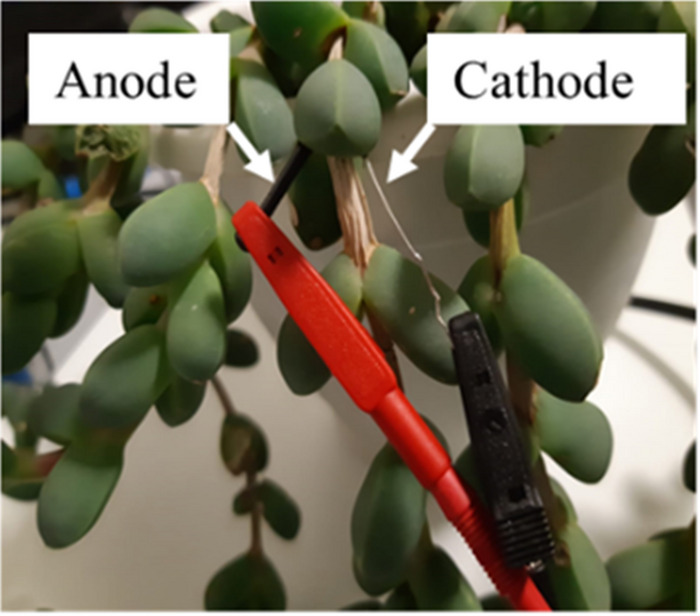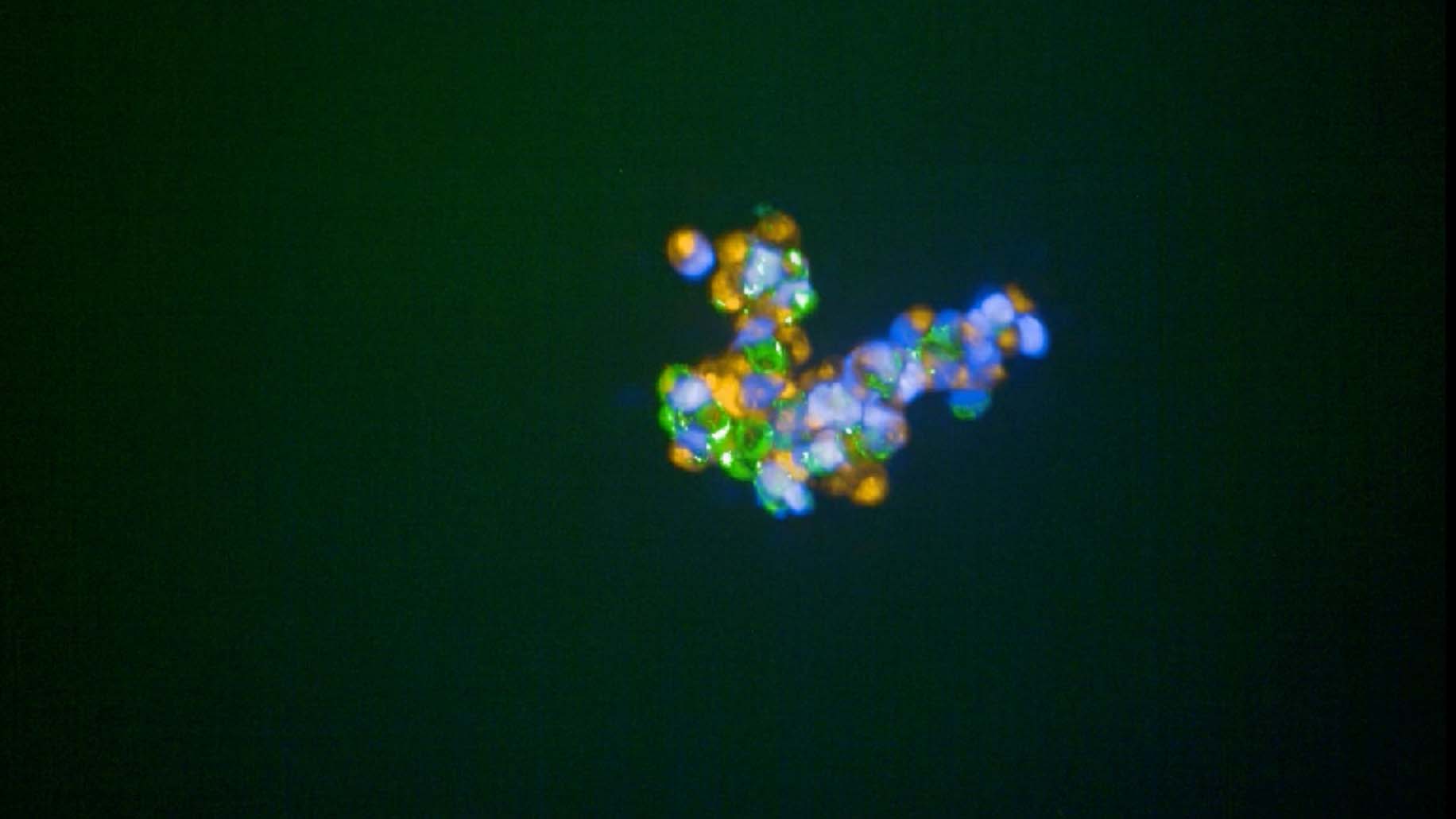
The ice plant succulent shown here can become a living solar cell and power a circuit using photosynthesis.
Credit: Adapted from ACS Applied Materials & Interfaces, 2022, DOI: 10.1021/acsami.2c15123
Though plants can serve as a source of food, oxygen and décor, they’re not often considered to be a good source of electricity. But by collecting electrons naturally transported within plant cells, scientists can generate electricity as part of a “green,” biological solar cell. Now, researchers reporting in ACS Applied Materials & Interfaces have, for the first time, used a succulent plant to create a living “bio-solar cell” that runs on photosynthesis.
In all living cells, from bacteria and fungi to plants and animals, electrons are shuttled around as part of natural, biochemical processes. But if electrodes are present, the cells can actually generate electricity that can be used externally. Previous researchers have created fuel cells in this way with bacteria, but the microbes had to be constantly fed. Instead, scientists, including Noam Adir’s team, have turned to photosynthesis to generate current. During this process, light drives a flow of electrons from water that ultimately results in the generation of oxygen and sugar. This means that living photosynthetic cells are constantly producing a flow of electrons that can be pulled away as a “photocurrent” and used to power an external circuit, just like a solar cell.
Certain plants — like the succulents found in arid environments — have thick cuticles to keep water and nutrients within their leaves. Yaniv Shlosberg, Gadi Schuster and Adir wanted to test, for the first time, whether photosynthesis in succulents could create power for living solar cells using their internal water and nutrients as the electrolyte solution of an electrochemical cell.
The researchers created a living solar cell using the succulent Corpuscularia lehmannii, also called the “ice plant.” They inserted an iron anode and platinum cathode into one of the plant’s leaves and found that its voltage was 0.28V. When connected into a circuit, it produced up to 20 µA/cm2 of photocurrent density, when exposed to light and could continue producing current for over a day. Though these numbers are less than that of a traditional alkaline battery, they are representative of just a single leaf. Previous studies on similar organic devices suggest that connecting multiple leaves in series could increase the voltage. The team specifically designed the living solar cell so that protons within the internal leaf solution could be combined to form hydrogen gas at the cathode, and this hydrogen could be collected and used in other applications. The researchers say that their method could enable the development of future sustainable, multifunctional green energy technologies.
Original Article: Producing ‘green’ energy — literally — from living plant ‘bio-solar cells’
More from: Technion-Israel Institute of Technology | American Chemical Society
The Latest Updates from Bing News
Go deeper with Bing News on:
Plant bio-solar cells
- Solar Panel Efficiency Explained (2024)
Solar panels consist of modules or photovoltaic (PV) cells. You can measure the efficiency of a PV cell based on the percentage of light energy it converts into electricity. Alternatively ...
- Solar Energy News
May 15, 2024 — Researchers who contributed to the development of record-breaking solar cells a few years ago, expanded their invention. The self-assembled monolayers can now be applied not only ...
- Tata Power’s Tirunelveli fab to make solar cells from June
Praveer Sinha, CEO and managing director of Tata Power says the company's 4 GW solar cell factory in the Indian state of Tamil Nadu will be commissioned from next month. It will reach peak production ...
- A low-energy process for high-performance solar cells could simplify the manufacturing process
Finding reliable, eco-friendly power sources is crucial as our world grapples with increasing energy needs and the urgent call to combat climate change. Solar energy offers one solution, with ...
- Next Generation Solar Cells
However, conventional silicon-based solar cells have one particular weakness - their power generation efficiency depends on the weather. This is why the world is now focusing on the development of ...
Go deeper with Bing News on:
Biological solar cell
- Scientists control daily biological clock of algae, advancing biomedicine
Carl H. Johnson, Cornelius Vanderbilt Professor of Biological Sciences, along with a team of Vanderbilt scientists, have succeeded in adjusting the daily biological clock of cyanobacteria, making the ...
- Powerful Solar Storm Hits Earth, Could Disrupt Communication, Power Grids
A huge solar storm begun pummeling Earth on Friday, bringing possible disruptions to satellites and power grids -- and stunning auroras -- as it intensifies.
- Solar storm explained: How geomagnetic storms can affect internet, power outages, satellites
Experts were monitoring the sun after solar flares & coronal mass ejections/CMEs that began May 8, 2024. Earth is under a severe G4 storm watch May 10 ...
- Should we fight climate change by re-engineering life itself?
Life has transformed our world over billions of years, turning a dead rock into the lush, fertile planet we know today. But human activity is currently transforming Earth again, this time by releasing ...
- Researchers take major step toward developing next-generation solar cells
a professor in the Department of Chemical and Biological Engineering and fellow with CU Boulder's Renewable & Sustainable Energy Institute. Scientists have been testing perovskite solar cells by ...











